1934 Aston Martin MkII
Since this incredibly original 1934 Aston Martin MkII was dragged out of a barn, a year-long operation to preserve it is has been completed. Time to revisit.
Words James Elliott
Photography Matthew Howell
RETURN TO SPLENDOUR
AMAZING EARLY ASTON CONSERVATION
‘THIS CAR IS SPECIAL. IT IS IMPOSSIBLE TO PUT YOUR FINGER ON EXACTLY WHY IT IS MORE SPECIAL THAN OTHERS, BUT IT IS’ ASTON MARTIN CONSERVATION
ASTON MARTIN BARN-FIND 1934 car’s extraordinary preservation tale
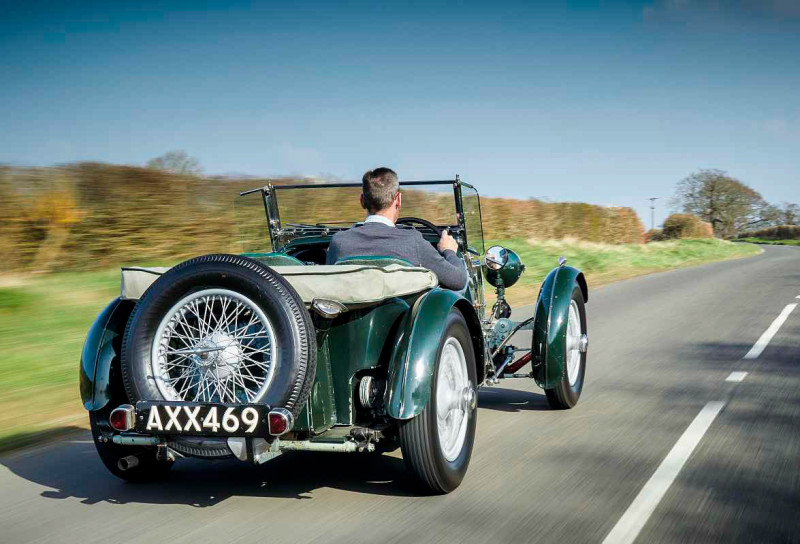
‘IT’S NOT JUST ME THAT THINKS IT’S SPECIAL – OCTANE READERS VOTED IT CAR OF THE YEAR’
Tim is an agronomist, and a Mini racer. He has generously loaned us his farmyard to take the post-conservation pictures of the car known universally as 402, the barnfind Aston Martin chassis B4/402/S believed to be the most original of its type in the world. It’s a wonderful setting and Tim has just set down a tray of welcome mugs of tea when he announces: ‘It seems like only yesterday that you were photographing that Sir Ralph Richardson car here.’ Only this is that Sir Ralph Richardson car, which is why we have consciously returned to the same location, and Tim’s confusion is testament to just how much it has changed in the past year. Yet the fact that when I first saw it earlier that morning I had the opposite reaction – I was really quite emotional and issued a huge sigh of relief – is testament to just how much it hasn’t changed. And these reactions are both testament to the fact that those behind this remarkable, almost precarious, exercise in conservation have successfully walked the tightrope between triumph and disaster.
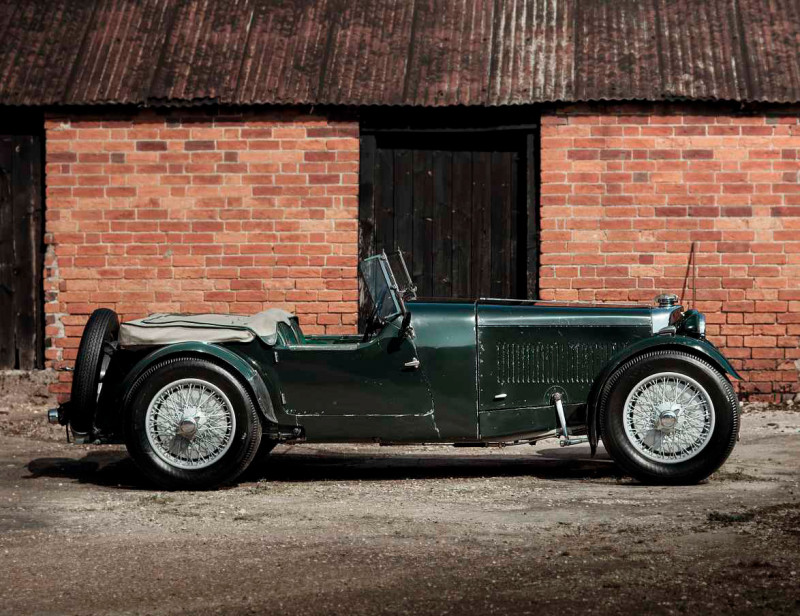
The history of this car was outlined in Octane 213, although, thanks to Martin Saul, we now know that there were ten previous owners rather than six. To recap, this 1934 Aston Martin MkII was only the third MkII constructed at Victoria Road, Feltham, built alongside chassis 403, which is widely acknowledged as being in effect the first Ulster. 402 was bought new by the esteemed actor Sir Ralph Richardson who, according to the Aston Martin service records, used the car extensively until 1941, having covered over 24,000 miles. 402 then had a succession of mainly military owners until Tony Bubb bought it in 1962. Bubb used and raced 402 until 1969, when it was laid-up in his barn with engine issues. There it stayed until 2020, when he decided to sell and it was bought by Ecurie Bertelli’s Robert and Ali Blakemore, who set about finding the right person to take on its conservation in a manner of which they approved. At the point that it was rescued from Bubb’s barn, this exciting rediscovery appeared in Octane and that feature lit a fire under potential new owners who, according to Blakemore, were queuing around the block for the ‘once in a lifetime’ opportunity to preserve a car of this originality. It especially chimed with retired Wing Commanders Tom and Sue Wood from Malvern, Worcestershire, who had got into the marque a decade ago via a DB9 coupé and at that point had three modern Astons (a DB9 GT Volante and a Vantage AMR 59).
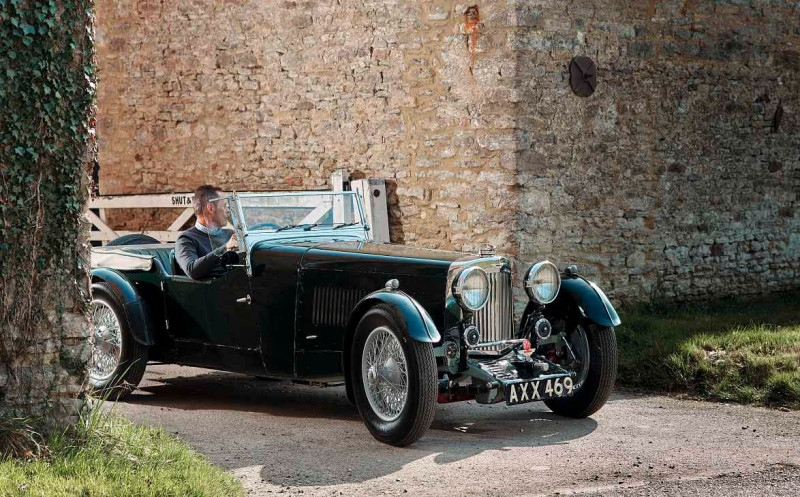
Sue explains: ‘We both loved Aston Martins because they are such elegant cars, the very embodiment of Britishness. Tom, whose father always dreamed of owning one and used to take him on daytrips to Newport Pagnell, just said: “If we both love them and we both want one, why don’t we get one?” So we did and that’s how it started. When Tom saw your article on 402, he immediately got the same glint in his eye…’
‘It was more than just wanting the car,’ adds Tom. ‘As soon as we saw the article in Octane, we felt an obligation that we needed to make sure the right thing was done the right way for this car and the only way to guarantee that was to buy it! We had no interest in pre-war cars prior to that and what really floated our boat was that it was going to be conserved.’

Such determination gelled with the vision of Ecurie Bertelli proprietors Robert and Ali Blakemore who, while stopping short of formally screening potential owners, knew precisely what they wanted done with the car, and how. The matchmaker was historian Steve Waddingham, who has been collating the history of 402 and whom the Woods contacted to enquire about the car. He recommended them to the Blakemores; the rest is history. Immediately the Woods proved that they were the right people, setting up a now-thriving Facebook group for prewar Aston Martins, organising a club register, taking on club duties and totally immersing themselves in the niche world that caters for the 450 survivors of Aston Martin’s 681 pre-war cars. More unusually, Tom became actively involved in the conservation, travelling across the country at least once every other week to help out in the workshop. I know a huge number of specialists and can’t think of one who would welcome such involvement, or interference. Robert Blakemore chooses his words carefully: ‘It is not something I would necessarily encourage generally, but I have to say that in this particular case Tom’s assistance was very welcome and exceptionally helpful.’
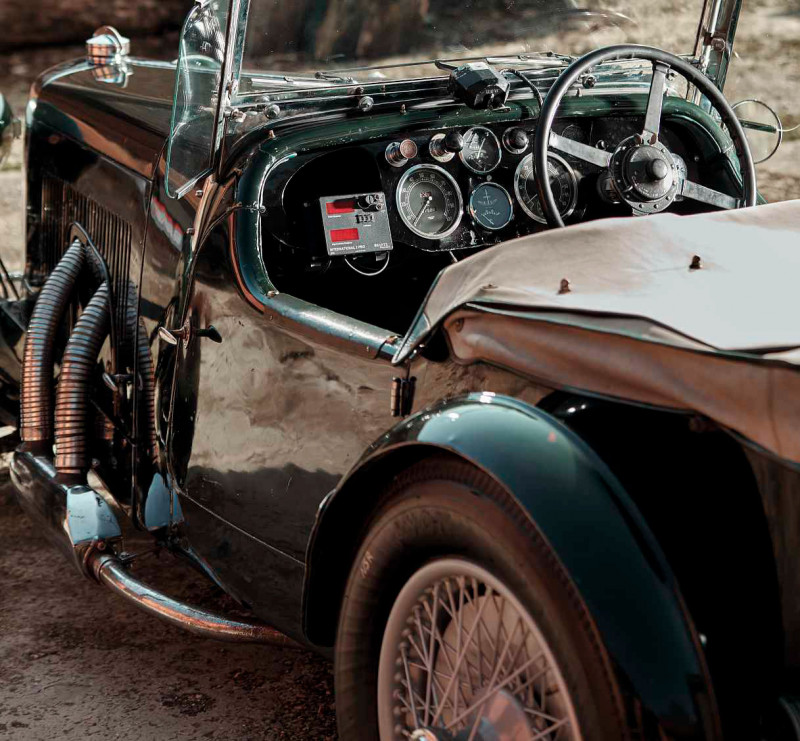
Will Kettleborough has been at Ecurie Bertelli for ten years, having started at local post-war Aston specialist Desmond J Smail, and did most of the heavy lifting: ‘From the age of ten I wanted to be a car mechanic and I always loved old stuff. This is the only conservation I’ve done because most cars we get in for restoration aren’t in good enough condition to preserve. As soon as the timber frame is rotten, the skin has to come off and then you are starting from scratch. With this one the frame was in remarkable condition and just one piece in the passenger footwell had to be replaced. Doing that with the bodywork in place was a challenge, but conservation is definitely more satisfying overall and Tom was a very useful assistant.’ For his part, Tom reckons that level of involvement has made him far more attached to 402, far more a part of its history. I get that.
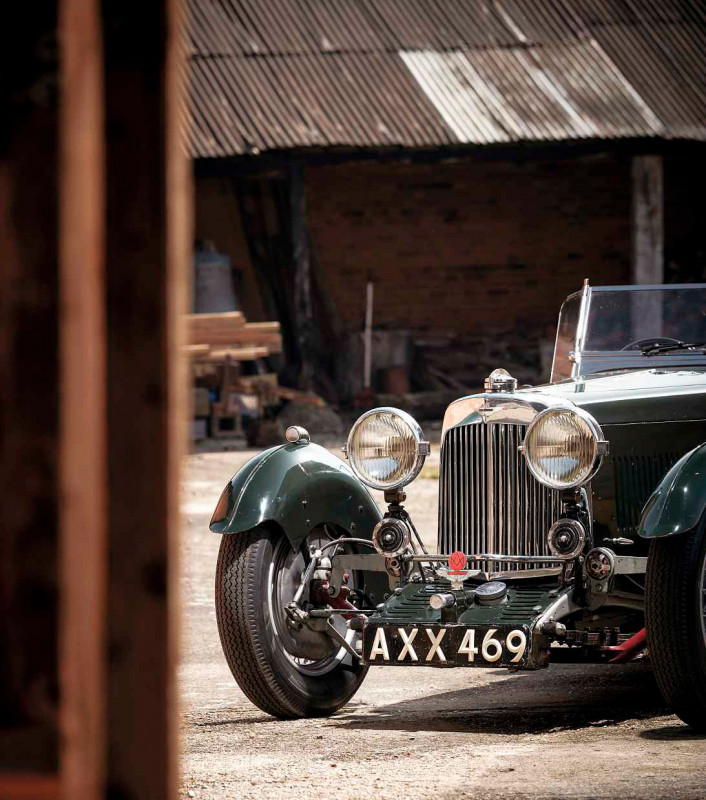
The results of both their labours are astonishing, the car at first unrecognisable from the derelict wreck that I saw just over a year previously, until you get close and start to notice the details. To summarise the year-long works: they did everything and nothing. The big change is that 402 is running a new engine under the original rocker cover, though still fed by a pair of 1¼in SUs. The original engine was the reason it was taken off the road and, though it could be rebuilt, it was thought better to preserve it rather than risk further failure due to the weakness inherent in the blocks of early engines, which crack because their stud holes are too close to the bores. Besides, the new engine has Ulster-beating performance from 90bhp (standard is 73) and can rev to 6000rpm. 402’s future intended use is given away by a small electric fan and a big Brantz rally clock yet, these anachronous but forgiveable touches aside, it is breathtaking, a real challenge to see what few bits are new.

‘Once we got rid of 50 years of dirt and grime, we were astonished at how good it was,’ says Robert Blakemore. ‘Apart from where the Le Mans Green paint was entirely missing behind both the rear wheels, it is overwhelmingly original and all we have done is stabilise it and seal it, working with specialists HMG Paint. In a couple of places we have touched it in, but not many, because the chips are part of the car’s story so we kept most of them after securing the paint. The intention was never to return it to how it was built, but to how it went into Mr Bubbs’ barn in 1969, rather than wiping out the first 30 years of its life.’
Mechanically, apart from the new engine, everything has been overhauled, but nothing has been replaced. Bearings, bushes and seals have been renewed, as have safety-critical brake shoes and linings, while the rusty and pitted wheels have been rebuilt for the same reason. Even where there are new body pins attaching the aluminium skin to the wooden frame, they are indistinguishable from the distinctive copper-coated originals.
It is hard to believe many pieces are not new or rechromed, such as the switch panel for the magneto plus main and reserve tanks to the right of the big, four-spoke wheel, but they are not, nothing is. Besides, they are so rare that finding another would be a chore. It is all down to elbow grease. ‘I spent a day-and-a-half just cleaning the radiator surround,’ chips in Tom. It gleams like new.
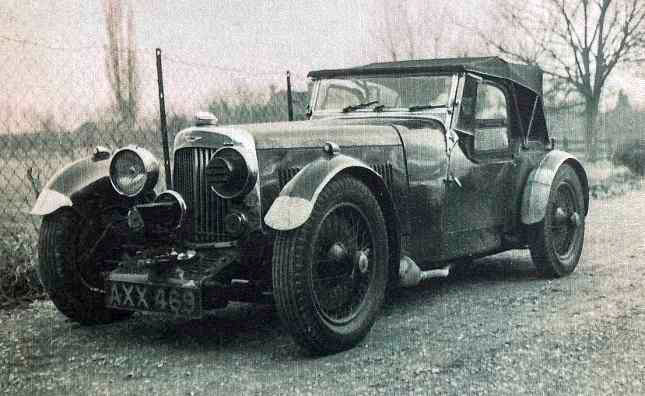
The rare ‘double’ instruments – fuel/water, amps/oil pressure – of the early car have been overhauled, and the glass (with its clever arrangement where the sidescreens can be repurposed as aeroscreens when you fold the main screen down) is similarly original. This feature is as much a work of genius as the pull-out swivelling dashlamp, which reminds us just how high the build quality of these cars was. Less clever was the mounting of the spare, which would originally have been directly onto the fuel tank, so it is now cradled in a subtle support brace that comes straight off the tubular rear chassis crossmembers. One of the stoneguards on the rear wings is original, the other is missing part of the original supporting frame – I waste ten minutes of my life trying to tell which before giving up. Only Will knows, apparently.
Special mention must go to RC Moss, which did the interior trimming and upholstery. The rear seat cushion is original, the unsalvageable vinyl fronts are not, yet they all look as if they came from the same litter. The front seat frames had to be reconstructed and were then retrimmed with the correct leather, weathered for patina and given their correct carpet backing. The replacement tonneau has been similarly aged with a view to how it would have deteriorated and discoloured over decades in place. The result is variations in colouring that are utterly convincing. Good Lord, these people are clever.
The strict dictionary definition of preservation may seem more appropriate than conservation for this project, but I like the more romantic connotations of the latter, like conserving wildlife. Anyway, that is the term those involved have settled on and they have earned the right. Tom and Sue will be calling the Aston ‘Hedgehog’ and have big plans for it. Tom has already mastered double-declutching and will be rallying in it this year; Sue is practising and will be out in 402 in 2023.
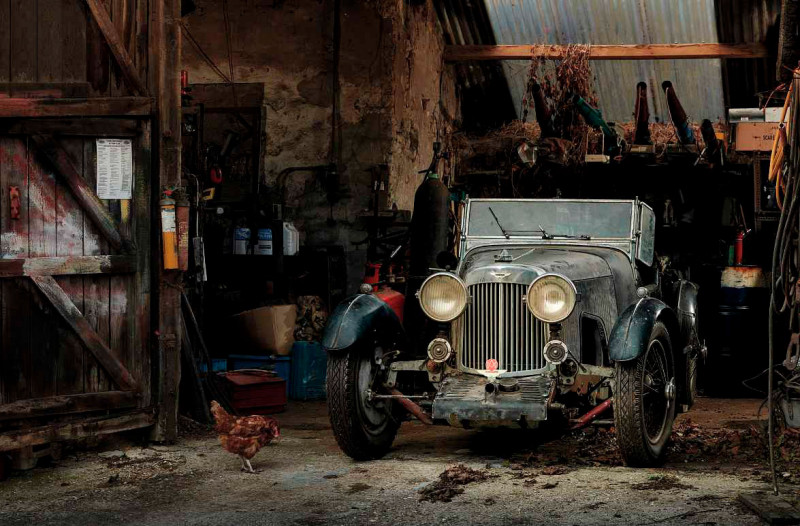
Towards the end of the day, it is time for my drive, which turns out to be more of a driving lesson. I would love to tell you that I instantly mastered the Aston and wore it like a second skin, but there is a witness, Ecurie Bertelli boss Robert Blakemore. He and I head out and I suffer from the classic journalist’s error of being too gentle (well, it is someone else’s car). After a couple of botched changes Robert advises: ‘Hit the clutch harder and quicker and rev much higher.’ I promise I can doubled-clutch proficiently, and drive centre-throttle, though it may not have seemed it at first, and while I wouldn’t say I mastered it ready to go racing, I got there by the end of Robert’s test route. ‘It isn’t the easiest double-declutch,’ I protest. His politely pained expression says otherwise. But let’s not get hung up on that. It is a wonderful car to drive, light and willing and well capable of keeping up with modern traffic, though it takes rather longer to slow. It is very well-planted on the road but for me the highlight is the taut and direct steering, with none of the vagueness and randomness of many pre-war cars. It requires a strong hand or it will let the car drift wide on corners, but otherwise 402 – sorry, Hedgehog – tracks true on country roads and, unlike many vintage beasts, never feels like it might get pitched into the weeds (or the other lane) if it gets unsettled when you hit the wrong bit of road.
All too soon, we are back at Ecurie Bertelli and my day with 402 is over. This car is special. It is impossible to put your finger on exactly why it is more special than others, but it is. And it is not just me that thinks so – last year, Octane readers voted it Car of the Year in the Historic Motoring Awards. I’ve no doubt that it will be a contender for Restoration of the Year this year, and could even retain its Car of the Year title. That would be a first.
Above 402 photographed at the same spot as it was before the works started. It has been transformed yet is unmistakeably the same car, retaining virtually all of its precious originality. Job done. Above and opposite Engine was replaced rather than risk the aged original; photos show the delicate conservation process, including touching up the paint. Owner Tom Wood (photo bottom right, on left, with Will Kettleborough) became actively involved in the conservation. Clockwise, from top of facing page Aston as found, just over a year ago; ‘weathered’ leather front seats are a work of art; incredibly, pipework is original; as owned by Michael Abercrombie Homfray, 1941-1945; chassis 402 is sprightly on the road.
‘THOSE BEHIND THIS EXERCISE IN CONSERVATION HAVE WALKED THE TIGHTROPE BETWEEN TRIUMPH AND DISASTER’
TECHNICAL DATA FILE 1934 Aston Martin MkII (standard tune)
- Engine 1495cc OHC four-cylinder, two 1¼in SU carburettors
- Max Power 73bhp @ 4750rpm
- Max Torque 94lb ft @ 3400rpm
- Transmission Four-speed non-synchromesh manual, rear-wheel drive
- Steering Marles worm and peg
- Suspension Beam axles (live rear), semi-elliptic leaf springs, Hartford friction dampers
- Brakes Cable-operated Drums
- Weight 965kg
- Top speed 82mph


